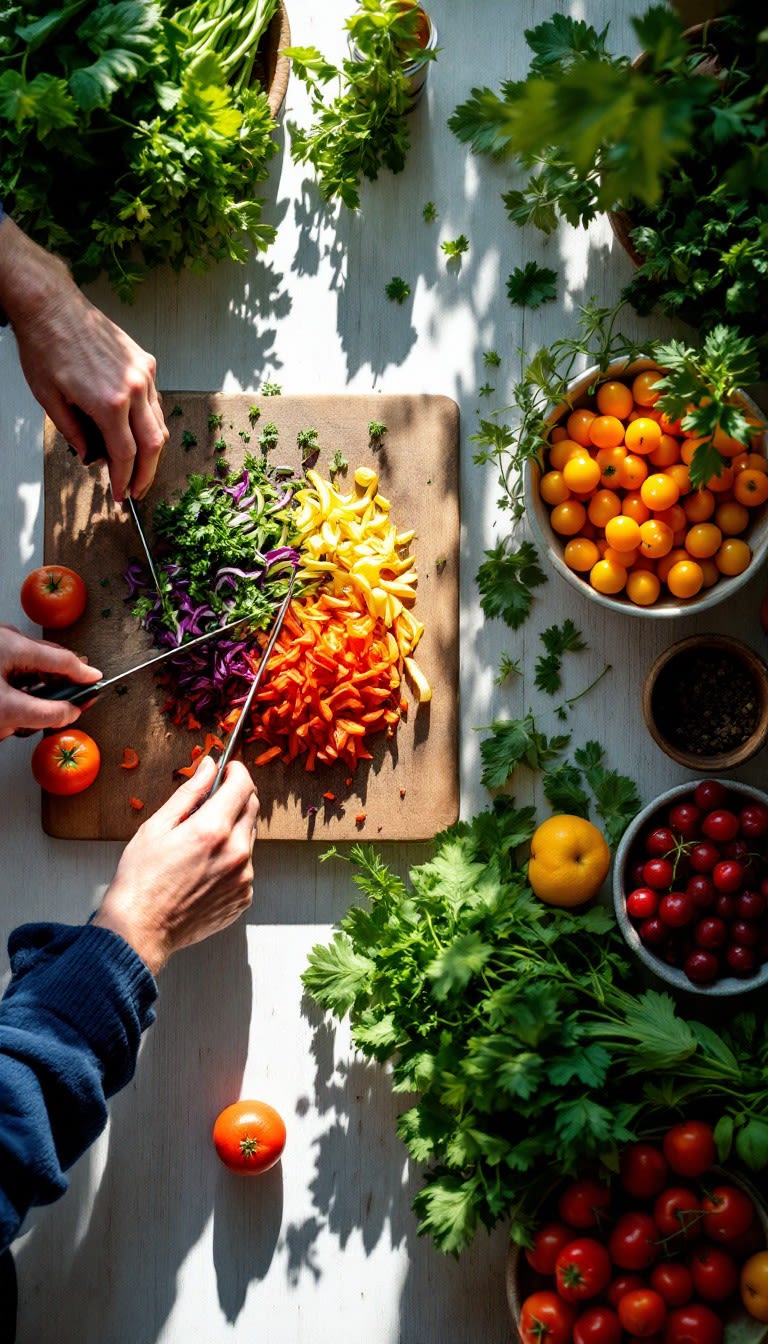From Root Vegetables to Citrus Fruits: Your Ultimate Guide to Winter Ingredients in 2024
Harnessing the Flavors of Winter: A Seasonal Guide to Nourishment and Comfort
Winter transforms the way we think about food. As the chill sets in, our cravings naturally turn to hearty, comforting meals that nourish both body and soul. At the heart of this seasonal shift is a treasure trove of ingredients that shine brightest during the colder months. From the earthy sweetness of root vegetables to the vibrant zest of citrus fruits, winter produce offers a unique opportunity to create dishes that are as satisfying as they are delicious.
But cooking in winter isn’t just about following trends—it’s about reconnecting with the rhythms of nature, supporting local agriculture, and making the most of fresh, nutrient-rich foods. This guide explores the magic of seasonal cooking, highlights the best winter ingredients, and offers practical tips and recipes to help you embrace the season with confidence and creativity.
Why Seasonal Cooking Matters
A Natural Symphony of Flavor
Cooking with the seasons isn’t just about enjoying better-tasting food—it’s about aligning with nature’s cycles. Ingredients harvested in their prime are fresher, more flavorful, and packed with nutrients. Think of biting into a crisp apple or savoring the rich sweetness of a roasted butternut squash—they embody the essence of the season.
Winter produce is naturally suited to the season’s needs. Root vegetables and hardy greens are dense with fiber and carbohydrates, providing warmth and energy when the temperatures drop. These seasonal staples, which sustained people through centuries of harsh winters, remain essential for modern-day health and wellness.
Environmental and Economic Benefits
Seasonal cooking is as eco-friendly as it is economical. Locally grown, in-season produce requires less transportation and storage, reducing its carbon footprint. By choosing what’s in season, you support local farmers and help sustain your community.
Additionally, in-season foods are often more affordable. When crops are abundant, prices drop. Bulk-buying winter staples like potatoes and squash not only saves money but also ensures you have fresh, long-lasting ingredients on hand.
Winter’s Best Ingredients
Root Vegetables: Winter’s Backbone
Carrots, parsnips, sweet potatoes, beets, and turnips are quintessential winter vegetables. These underground treasures develop a natural sweetness when exposed to frost, making them perfect for a range of dishes.
Carrots: Roast them for caramelized sides, puree them into soups, or shred them into vibrant winter salads.
Sweet Potatoes: Ideal for casseroles, soups, or even desserts like pies.
Beets: Roast or pickle them for a bold, colorful addition to any meal.
Packed with potassium, vitamin C, and fiber, root vegetables are nutrient-dense and boast impressive shelf lives, making them indispensable during the colder months.
Cruciferous Vegetables: Cold-Weather Champions
Kale, cabbage, Brussels sprouts, and cauliflower thrive in winter, developing sweeter flavors after a frost.
Kale: Perfect for salads, soups, or sautéed as a simple side.
Brussels Sprouts: Roast with olive oil and finish with balsamic glaze or parmesan.
Cabbage: Ideal for slaws, sauerkraut, or braised with apples for a sweet-savory twist.
Rich in vitamins A, C, and K, these vegetables are immune-boosting powerhouses that keep you healthy through flu season.
Citrus Fruits: Winter’s Bright Spot
Oranges, lemons, grapefruits, and limes bring sunshine to gray winter days. High in vitamin C and packed with tangy flavor, they balance the heaviness of winter meals.
Oranges: Add slices to salads, zest into desserts, or use in savory dishes like duck or pork.
Lemons: A squeeze of juice or a sprinkle of zest elevates pasta, fish, or roasted vegetables.
Citrus fruits not only add vibrant flavors but also brighten your meals with their cheerful colors.
Herbs and Spices: The Soul of Winter Cooking
Fresh herbs like rosemary, thyme, and sage, along with warming spices like cinnamon, nutmeg, and cloves, define the flavors of winter cooking.
Cinnamon: A dash in oatmeal or squash soup adds depth and warmth.
Rosemary: Infuses roasted potatoes or meats with aromatic richness.
These flavors transform simple ingredients into cozy, inviting dishes.
Cooking with Winter Ingredients
Storage Tips
Proper storage preserves the quality of winter produce. Keep root vegetables in a cool, dark place, and store leafy greens in breathable bags in the fridge. Citrus fruits can stay at room temperature for a few days but last longer when refrigerated. Freezing leftovers is another excellent way to reduce waste.
Techniques That Highlight Flavor
Roasting: Caramelizes the natural sugars in vegetables, intensifying their sweetness.
Braising: Makes tough greens and meats tender and flavorful.
Slow Cooking: Builds layers of flavor in soups and stews over time.
Finish dishes with fresh herbs or a splash of citrus juice to add brightness and balance.
Recipe Inspiration
Soups and Stews: Try a creamy carrot and ginger soup or a classic beef stew with root vegetables. Vegetarian options like lentil and kale soup are hearty and satisfying.
Main Courses: Roast chicken with root vegetables, stuffed acorn squash with quinoa and cranberries, or baked salmon with citrus glaze are perfect winter entrees.
Desserts: End on a sweet note with spiced pear crumble, orange and almond cake, or dark chocolate tart with candied citrus.
Embracing the Season
Winter is a time to slow down and savor life’s comforts, especially in the kitchen. Cooking with seasonal ingredients not only enhances your meals but also deepens your connection to nature and your community. From hearty roots to zesty citrus, the flavors of winter remind us of the beauty and abundance of the season.
Embrace winter’s bounty, and let your kitchen become a warm haven of creativity and nourishment.




